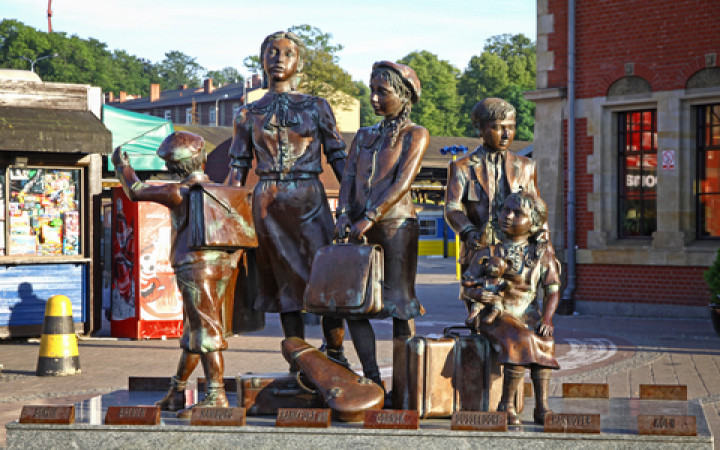Today’s Wonder of the Day was inspired by Samhita. Samhita Wonders, “How did people survive the holocaust?” Thanks for WONDERing with us, Samhita!
Today in Wonderopolis, we are learning about the Kindertransport—which is German for “children’s transport.” During World War II the Nazis targeted Jewish people for death, including children. Many organizations did what they could to help bring people to safety. Jewish families worked hard, with these organizations, to have their children leave dangerous areas via the Kindertransport.
The movement to get children to safety began after the Kristallnacht, when Nazis attacked Jewish people and their property—arresting people, destroying buildings, and looting shops. Around 10,000 youths from Nazi-controlled areas—including Germany, Austria, Poland, and Czechoslovakia—fled on foot, rode trains, and then took ships to get to England.
Florence Nankivell set up and went with the first group of 196 children from an orphanage. The Nazis had burned it during Kristallnacht. Nankivell moved the youth from Berlin, Germany, and arrived the next day—December 2, 1938—in Harwich, Great Britain. Many people helped children to safety in Great Britain until September 1939, when the war closed the borders.
On May 14, 1940, the last known Kindertransport left the Netherlands—the day the Dutch gave in to Germany.
In the video in this Wonder’s gallery, Edith Maniker talks about her experience on the Kindertransport. Mona Golabek shares how her mother’s story—fleeing on the Kindertransport from Nazi-occupied Vienna to live on Willesden Lane—affected her life.
The youngsters taken to England were under 17 years old. Their families weren’t able to leave the country because of harsh laws. People in many countries helped move these mostly Jewish children.
The children went into approved foster care. These homes received money weekly or monthly to help support these children. Many groups—both faith-based and non-religious—helped organize places for the refugees to stay. They asked the people of Great Britain to give homes to these children and made sure they would be safe places.
Each child had £50 to go back to their families. When the war ended, many did not have family to return to. Their family members died in the Holocaust. Many of the youth stayed in Britain or moved to Israel, America, Canada, or Australia.
Their stories didn’t end there, though. Children of the Kindertransport and their families can join a group called the Association of Jewish Refugees (AJR). This organization provides help and support to Holocaust refugees and survivors of any Nazi-occupied country. They also welcome relatives as members. Jewish refugees from Central Europe founded the AJR in 1941. The AJR also sets up events so survivors can gather.
One of those gatherings happened on September 1, 2022. That day, in Harwich, they dedicated a statue called “Safe Haven.” This statue joins others in London, England; Gdansk, Poland; Berlin and Hamburg, Germany; Prague, Czechoslovakia; and the Hook of Holland in the Netherlands. Each of these are important sites for the Kindertransport and people affected by it.
The children of the Kindertransport showed resilience as they left their families and moved to another country. Today, we all need to learn more about the Holocaust—and each other—to prevent needing a Kindertransport ever again. What do you know about the Holocaust? What do you know about Judaism? You can read more about these topics and more in our Jewish Heritage Collection.
Preserving memories are a vital part of the human experience, and USC Shoah Foundation’s Visual History Archive contains over 55,000 testimonies from survivors and witnesses—using audio and video—to educate future generations about the Holocaust and other atrocities, in support of the Institute’s mission to develop empathy, understanding, and respect through testimony so the next generation understands the importance of learning from the Holocaust and making the world a better place. Its IWitness platform contains many of these testimonies that were gathered using recorded interviews to tell the stories of survivors and witnesses.
Standards: CCRA.R.1, CCRA.R.2, CCRA.R.4, CCRA.R.6, CCRA.R.10, CCRA.L.3, CCRA.L.4, CCRA.L.5, CCRA.L.6, CCRA.W.3, CCRA.W.4, CCRA.W.8, D2.His.6, SEL.1, SEL.3, NCAS.RE.9




